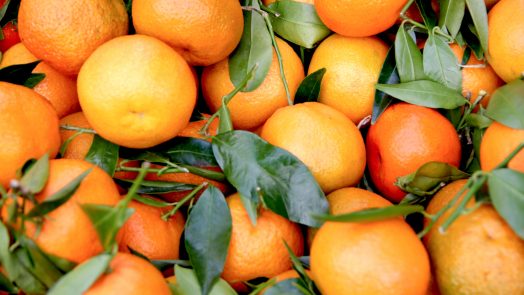The beauty that binds us

‘I experience beauty as that which connects rather than removes…There is no transcendence here. It is embodiment and connection. It is enfolding, grounding, reminding, startling, unsettling, shaking and restoring.’
The word ‘exquisite’ applies both to the pulchritudinous and the painful. It describes a reaction to an experience rather than the experience or object itself. A drawing in and holding of breath, eyes wide open or slammed shut, a dizziness, a sense that the moment has become a month. I lack pulchritude, regularly experience exquisite pain; and daily saturate all my senses with beauty. I am blessed to have intact senses. That’s all you need to know about me.
But wait. My eyes are almost burned by what I see. There’s a bowl in front of me that wasn’t here before. A brown button bowl and in it some apricots, some small oranges, some nuts, cherries and a banana…I am entranced by colour. I lift an orange into the flat filthy palm of my hand and feel and smell and lick it. The colour orange, the colour, the colour, my god, the colour orange. Before me is a feast of colour. I feel myself begin to dance, slowly, I am intoxicated by colour. I feel the colour in a quiet somnambulant rage. Such wonder, such absolute wonder, in such an insignificant fruit. I cannot, I will not eat this fruit. I sit in quiet joy, so complete, beyond the meaning of joy. My soul finds its own completeness in that bowl of colour…I want to bow before it, loving that blazing, roaring orange colour. [1]
When Brain Keenan, an Irishman, had this exultant experience, he had been held captive for months by Islamic Jihadists apparently as pay back for some aspect of US policy in the Middle East in the 1980s. In 1986 at the age of 36 he was teaching English in Beirut when was taken hostage and subjected to four-and one-half years of brutalising treatment including months in solitary confinement, torture and beatings, humiliations and rape. His book of this time, An Evil Cradling published in 1993, is widely held to be a masterpiece. The frontispiece quotes his words when he reaches safety at the Dutch Embassy in Damascus in which he likens himself to Rip Van Winkle and Humpty Dumpty: there are more parts than I began with.
Keenan’s capacity to reverence the colour, texture and smell of the colour orange under these conditions tells us much about the man, who through his struggle and writings, we have come to honour as a gifted writer with a generosity and spaciousness that astounds us all. But it also tells us much about humanity and the world.
In his account I find a reversal of traditional expectations of beauty in times of dread and pain. The encounter with beauty is often seen as transcendent, a lifting out, directing away, an overshadowing of forbidding reality. A time when I do not have to feel the fear, the suffering, the aloneness, the drear, the pending end. A time when I can touch the infinite and be uplifted by it; an encounter with that which is not tainted by anguish; a stairway to heaven. Mercifully metaphysical. This Platonic view is deeply embedded in the philosophical and religious traditions that have shaped my thought. Plato’s views ‘all rest on the assumption that truth to be found in the divine realm of eternal and immaterial forms and ideas rather than in the changing and deceptive shadows of the empirical and material reality. The Forms represent in the figures of Truth, Beauty and Justice that which is fully perfect, self-sufficient and unified. The material and natural objects, and worldly phenomena are always crude replicas of the paradigmatic perfection of the Forms, including also the human nature.’[2]
I experience beauty as that which connects rather than removes. It is illness, awkwardness and pain that cuts me off and beauty that brings me home. The sounds and songs of wild birds; the taste of butter; the texture of lentils; the faces of my lover and children; the flowers on the broad beans; the poetry of Gwen Harwood; the hymns of my childhood; the colours of an opal; a simple sculpture…I could list all day and still have more to report. There is no transcendence here. It is embodiment and connection. It is enfolding, grounding, reminding, startling, unsettling, shaking and restoring.
Thanks Julia, for bringing us your shining list and your hopes and resolves. It is its own phosphorescence sparling for all who seek belonging in a world that pushes them away.
Written by Lorna Hallahan, who lives in the Adelaide foothills with her beloveds, a garden and a flock of fine bantams. She loves all things related to wine and shared meals. Lorna has been a social worker for nearly 40 years and is an Associate Professor at Flinders University. She holds a PhD in disability theory and theology and finds that Christianity hangs onto her despite her various attempts to drop it.
[1] Keenan, Brian (1993). An Evil Cradling. London: Vintage. P75
[2] Peltonen, T. (2019) Transcendence, Consciousness and Order: Towards a Philosophical Spirituality of Organization in the Footsteps of Plato and Eric Voegelin. Philosophy of Management 18, 231–247
Images used are sourced from Upsplash.com
